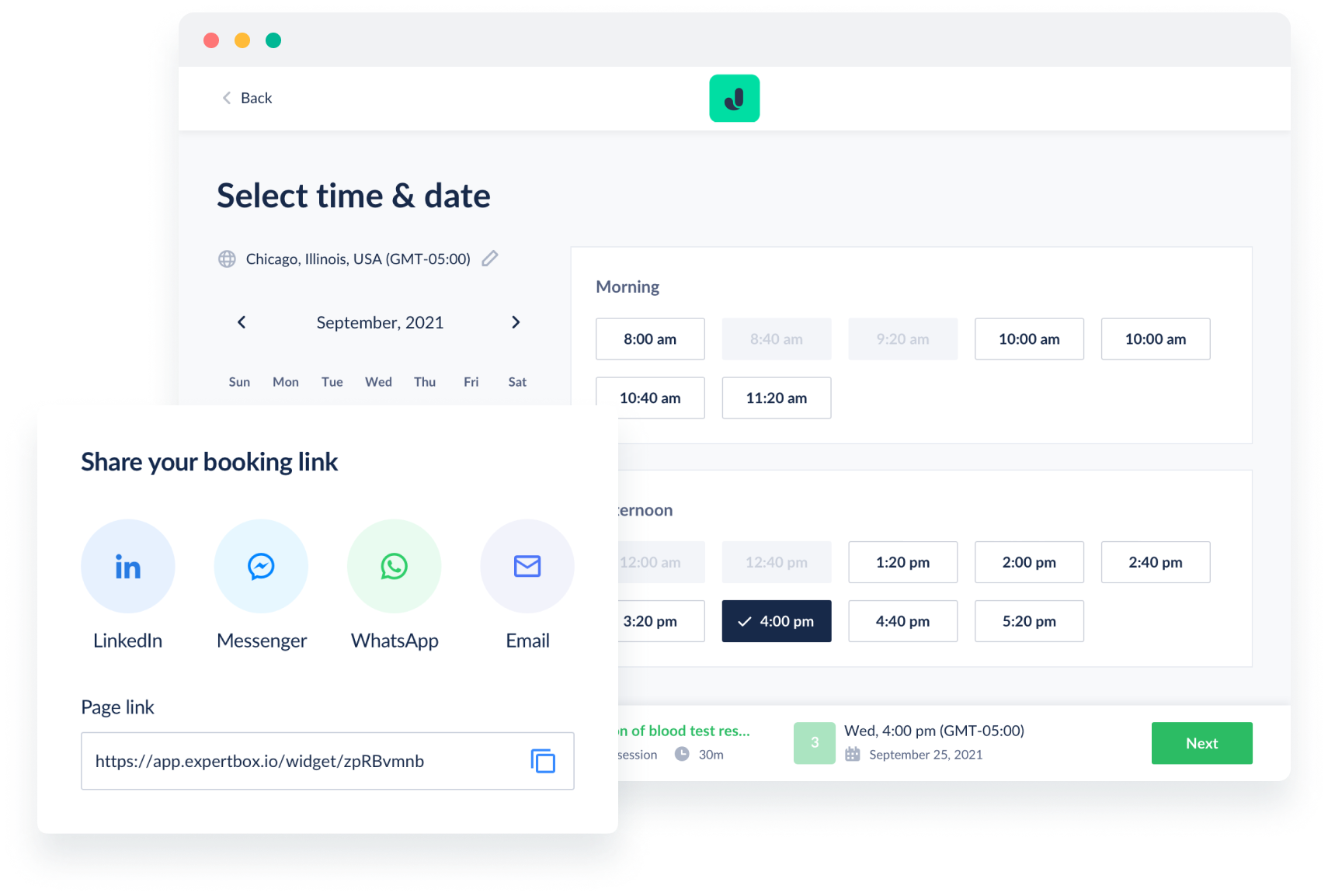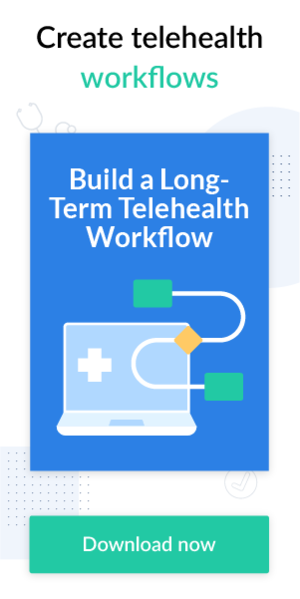While telehealth has been considered the safest way to deliver health care outside a doctor's office for some time, telemedicine use has increased 38 times since the beginning of the pandemic.
Today, patients' willingness to use virtual care is still high mainly because telemedicine:
1) improves healthcare access
2) saves money and reduces waiting time
3) provides more comfort and safety
Whether you're just considering adding a small telemedicine option to your practice or have decided to implement a widespread telehealth program, you might wonder how to prepare for a virtual meeting with a patient, ensure patients receive the care they expect, and how your clinic receives your desired revenue amount. Here are some tips for both healthcare providers and patients on preparing for a successful telemedicine visit.
How to prepare for a virtual meeting with a patient?
To effectively prepare for your first telemedicine appointment, complete the following steps:
#1 Test your equipment with a friend or colleague
Before meeting with a patient, practice with a friend or colleague to test your technology and collect feedback on what you can improve.
For example, testing your technology can help you adjust your camera settings to eye level and ensure your head and shoulders are in the center of the screen. Try speaking with and without headphones to see which works best for you. Also, make sure your camera angle is set correctly so that patients can see your hand gestures.
#2 Test your webcam
A quality webcam and microphone are necessary for a great patient experience. A high-quality webcam helps imitate personal interaction, making your patients feel more comfortable.
When choosing a camera, consider its quality, features, and cost; a great webcam doesn't necessarily have to be expensive. Most laptops and computers already have sufficient webcams. However, you can also do your own research, assess the options best suited for telemedicine, and then select a webcam that matches your medical needs and budget.
#3 Test your sound
Apart from testing your webcam, check your sound. You can do this with an audio recording program on your laptop or by asking the person you are practicing with to give you feedback after a call.
You might need to talk more loudly or quietly, get closer to or further from the microphone, or even purchase an external headset.
#4 Adjust your lighting
Before a virtual visit, ensure you are in a well-lit area and your image is clear. Having natural light in front of you is ideal. Try to balance the light in your background and avoid being too backlit.
#5 Check your surroundings
Find a quiet and private space. Whether you practice in an exam room, office, or another space, to ensure patient comfort and privacy during the visit, your area should not have distractions or background noise.
#6 Dress properly
Ensure your clothing looks professional — the same level of professionalism as you would wear for in-office appointments. Typically, you would wear a lab coat and a badge with a visible name.

Compared with all other clothing options sampled, formal attire with a white coat was most highly rated.
#7 Provide patients with all technology and space setup information
You or your administrative staff should contact patients at least a day before their first visit to provide sufficient setup information. This allows patients to collect required materials, such as lab results, vital sign measurements, or prescriptions from previous doctors and understand first appointment expectations.
Also, don't forget to ask the patient to send any outside medical records and images you may need prior to their visit.
#8 Check internet speed
Video conferencing usually takes a lot of bandwidth. When unnecessary tabs and programs are open on your computer, it can cause an unstable internet connection, frozen video, lower image quality, and syncing issues. A slow internet connection might lead to a frustrating patient experience or make it impossible to continue the appointment.
Close all other tabs in your browser when using the telemedicine platform to avoid reducing your telemedicine service’s quality. A wired internet connection should be the preferred option to eliminate possible interruptions. Use an Ethernet cable rather than relying on Wi-Fi service to minimize connection drops.
#9 Use the right internet browser
Ask your telemedicine vendor's technical support team what browsers are best to use. They might recommend using the Chrome or Safari browser, depending on which device you're launching your telemedicine practice from.

How to conduct a professional visit
To maintain a patient-centered and effective remote medical practice, follow these tips
- Involve the patient when setting the appointment’s agenda and highlight which of the patient's concerns you'll address during the visit.
- Talk slowly and clearly so the patient can understand you. You may have to pause longer than during face-to-face appointments.
- Nod your head to show that you hear and understand what the patient says.
- Make sure you're muted when a patient is speaking.
- Actively listen to show empathy and build trust.
Keep the patient's medical records and key health information on hand. Being able to view the patient's digital health records will give you a broader and more accurate picture of the patient's health.
The right telemedicine technology provider helps expand patients’ access to care and simplify care delivery for healthcare providers without losing quality. Learn how to choose reliable clinic management software in this guide.
How can you help your patients prepare for their virtual doctor visit?
Patients who have never tried telemedicine may need help preparing for their visit and knowing what to expect. To make the telemedicine experience user friendly:
#1 Make booking an appointment easy
Show your patients that online booking is the most convenient and time-saving option for booking and managing their medical appointments. Patients only need to follow the link their physician shares and choose an available time slot that best suits their schedule.

Telemedicine software, like ExpertBox, offers convenient scheduling and 24/7 automated online booking. With telemedicine software, physicians can easily control their workload and focus more on effective patient treatment.
#2 Send an informed consent document before the first visit
Craft all necessary legal documents, and email them to the patient once they book an appointment. This allows patients to view all forms and agree to their policies before their first visit.
Thanks to telemedicine software's automated document management, healthcare providers can comply with industry-specific requirements and not waste time filling in and transferring documents to patients during the visit.
While booking their first visit via ExpertBox, your patients will automatically receive an informed consent form and all other documents you’d like to attach.
#3 Highlight patient responsibilities during telehealth visits
Patients should be responsible for privacy on their side and payment. That means asking patients to
- Not share or discuss sensitive health information, such as treatment records or lab results, with other people or physicians over social networks, messengers, or any channels that are not HIPAA-compliant.
- Find a private location to avoid personal safety issues and interruptions during the visit. Having headphones may be helpful if family members might overhear a patient.
- Double-check with their health insurance to verify telehealth visit coverage before an appointment.
#4 Get patients set up for their first appointment
Depending on their appointment type, guide your patient on how to prepare. Here is a brief checklist to share with your patients to ensure they are ready
- Test your web camera. Patients should do a test video call with a friend or family member to check the picture quality and set their camera at eye level.
- Do a test call to check your sound. Patients should verify if their microphone works well.
- Make sure your device is fully charged and plugged in. This will prevent patients from getting disconnected or having other technical issues.
- Check what browser is best to use. For example, when patients use an online telemedicine app, it's better to use Chrome instead of Internet Explorer.
- Close unnecessary tabs and apps on your computer. Before the first telemedicine visit, patients should close any programs running in the background to prevent their device from slowing down.
- Have your physician's number accessible in case you're disconnected. If they have their doctor’s number, patients can immediately call their doctor back if any technical issues occur on their side.
- Write down specific questions, symptoms, or concerns you may have before the visit. It may also be helpful for patients to take notes during the appointment to highlight key points
- If needed, prepare medical information before your visit. Patients may need to provide a list of current medications, medical history, and vital sign measurements (body temperature, pulse rate, and blood pressure).
Find more tips on preparing patients for telehealth visits in our new article.
Wrapping up
By following these preparation tips to do virtual doctor visits work, healthcare providers increase their chances of getting the most out of telemedicine. Furthermore, thanks to virtual care's convenience, safety, and affordability, patients are more likely to be satisfied with telemedicine and your practice.
Remember, the more you train yourself, educate your patients, and help them prepare for visits, the better your patients' health outcomes and the higher your medical practice revenue will be.
Subscribe to our newsletter to be the first to see telemedicine market insights.
FAQ
-
Review the following points to prepare for your first telemedicine appointment:
- Test your equipment with a friend or colleague
- Test your webcam
- Test your sound
- Adjust your lighting
- Check your surroundings
- Dress properly
- Provide patients with all technology and space setup information
- Check internet speed
- Use the right internet browser
-
Patients who have never tried telemedicine may need extra guidance. Before the first online appointment:
- Send an informed consent document
- Explain patient responsibilities during telehealth visits
- Get patients set up for their first appointment by sharing a checklist:
- Test out a web camera to ensure the doctor clearly sees you
- Do a test call to check your sound
- Make sure your device is fully charged and plugged in
- Check what browser is best to use
- Close unnecessary tabs and apps on your computer
- Have your physician's number accessible in case you're disconnected
-
To maintain a patient-centered and effective remote medical practice, follow these tips
- Involve the patient when setting the appointment’s agenda and highlight which of the patient's concerns you'll address during the visit.
- Talk slowly and clearly so the patient can understand you. You may have to pause longer than during face-to-face appointments.
- Nod your head to show that you hear and understand what the patient says.
- Make sure you're muted when a patient is speaking.
- Actively listen to show empathy and build trust.




